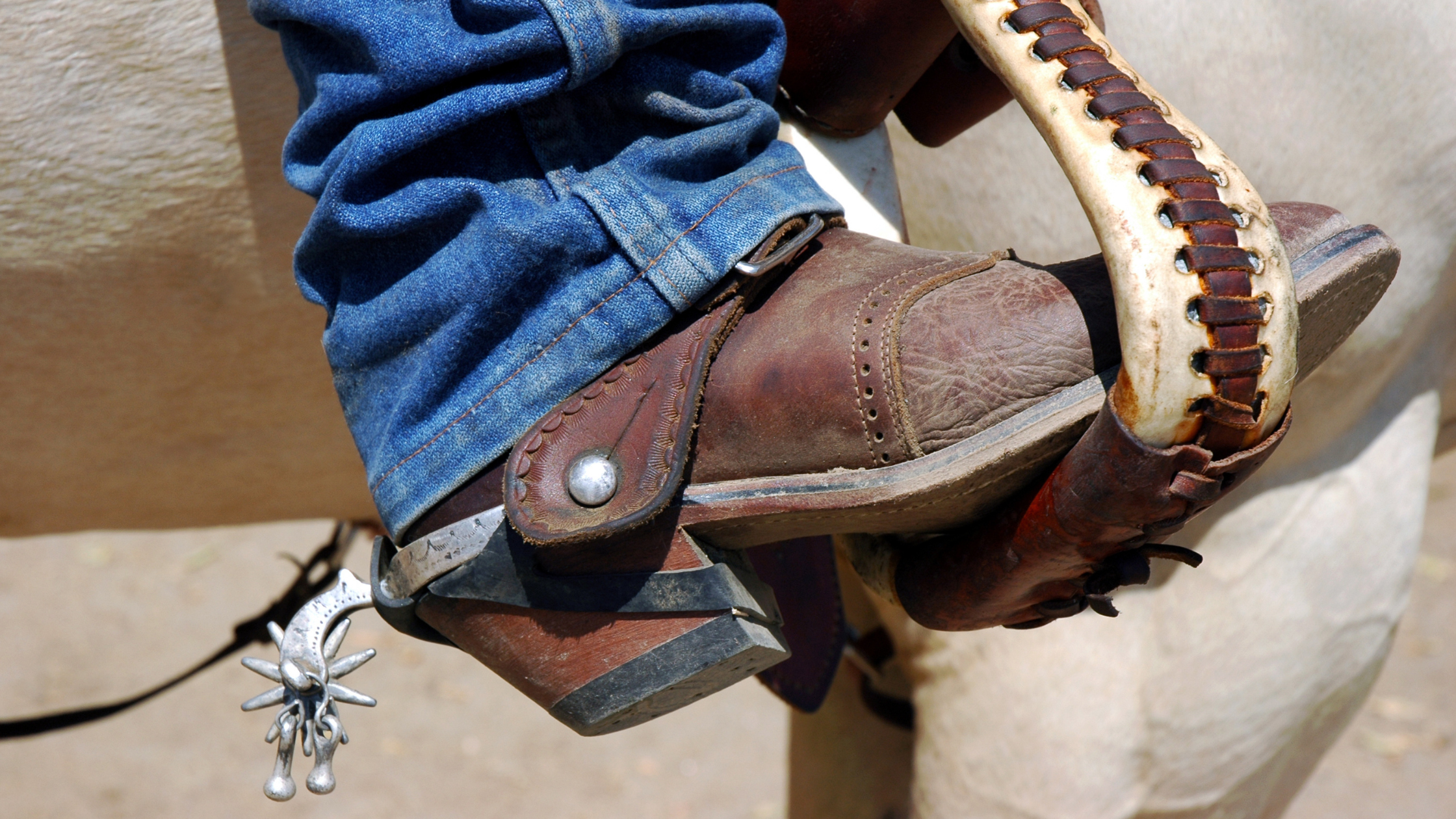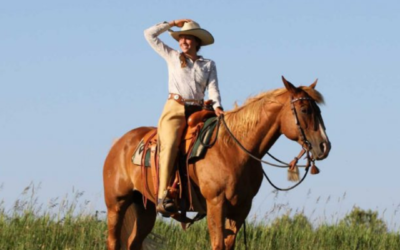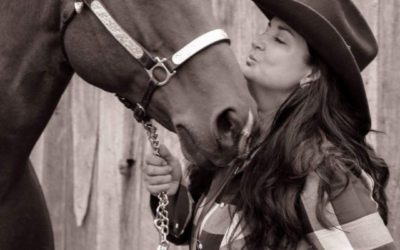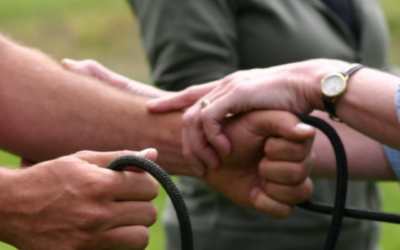Like any other piece of equipment that we use with our horses, spurs can be a valuable tool when used properly.
Often, people think that spurs are used to make the horse go faster. I disagree. Spurs should be primarily used as a lateral aid that tells our horse to move sideways, increase his bend, or increase engagement of the hind leg.
They should only be used when the rider has excellent body control and balance.
Blood on the horse’s side (or anywhere on the horse) is cause for immediate elimination.
On the Ranch
Cattle are quick, and their horns are extremely dangerous. While blood from a spur will get you and your horse eliminated, a gorging by a bull can get you killed. Most cattle are now de-horned but spurs are still used to cue a horse to move sideways very quickly when working with cows.
Cowboys and Vaqueros were proud of their spurs and often added pajados or jingle bobs to create a jingling sound whenever the foot moved. I’m pretty sure this must’ve been to let critters like snakes and scorpions know they were coming, but there’s no doubt that they sound pretty darn cool on a tall handsome man in a Stetson and wranglers. Not so much on teenage girls wearing boots and short shorts, but that’s just the mom in me talking.
In the Calvary
Troopers don’t join the military wearing spurs, they are required to earn them. The history of spurs in the military is fascinating. When new troopers arrived at new calvary units, they were given a horse with a shaved tail to signify their lowly status. Troopers were only allowed to wear spurs when they are not only proven horsemen but have proven mental and physical fitness as well as weapons proficiency and leadership skills during a grueling test that lasts several days. The granting of spurs after the “spur test” is done during a formal ceremony and “spur dinner”.
Mistakes People Make When Using Spurs
When spurs are used correctly, they can help your aids become lighter and softer. When used incorrectly, they can easily harm your relationship. Some horses will become dull and unresponsive to the spur, others will become overreactive.
As I said before, a spur is for refinement ~ not speed.
When are you ready for a spur?
Notice that I said are you ready – not is your horse ready (although that is important too.) It’s more important that YOU have a thorough understanding of how and why to use the type of spur you are choosing and have excellent body control ~ especially of your legs and heels. If you can’t sit a trot or canter without your heels coming up higher than your toes or your toes pointing outwards, I’d recommend that you work on your seat first.
~Jen Johnson
NAWDHorse.org



